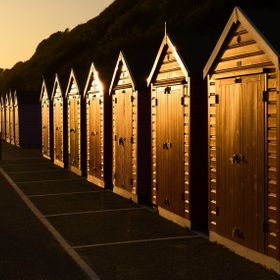

simonharding
Follow
I purchased this oil lamp to use as a prop for some outdoor shots. This was its first outing, and although there was some lamp oil in the tank, the wick was not...
Read more
I purchased this oil lamp to use as a prop for some outdoor shots. This was its first outing, and although there was some lamp oil in the tank, the wick was not lit on this occasion. The "light" was placed in the lantern globe with a radial filter with blown highlights and over-exposure to give the impression of light. The reason the lantern was not lit was because I had forgotten to bring matches!!!
Read less
Read less
Views
653
Likes
Awards
Curator's Selection
Featured
Peer Award
Superb Composition
Outstanding Creativity
Superior Skill
All Star
Magnificent Capture
Top Choice
Categories
Same photographer See allBehind The Lens
Discover more photos See all
Behind The Lens
Location
This photo was taken in a community managed field, just a couple of hundred yards from where I live. The field is quite unique in that it is an open space within the village, and allows the villagers to enjoy the countryside's sights, smells and sounds without having to venture beyond the village limits (very useful and much appreciated by the elderly and infirm).Time
I took this image at around midnight in the summer, and although the light pollution in the sky is evident, it has actually served to highlight the silhouette of the house in the background. I particularly liked the way the lights in the house looked like eyes, keeping a watchful guard!Lighting
The lighting for this shot was very straightforward. I wanted to keep the stars out of the focus and hence make them appear larger in the frame. Focus was on the lamp, and an aperture of f6.3 was enough to separate the lamp from the sky, and keep the sky out of focus. Using an 18mm focal length, I was crouched down below the level of the table, with my camera mounted on a tripod, pointing upwards towards the sky. During the 10 second exposure, I very lightly "painted" the lamp with my torch, in order to make sure it stood out against the black background of the trees. This 10 second exposure was sufficient to record the detail in the sky, and was enough time for me to light-paint the lamp.Equipment
Nearly all of my night shots are taken with my Nikon D850, which is excellent for long exposure night photography. The lens used here was the Nikon 14-24mm f2.8, whose performance always impresses me. My tripod is the carbon fibre Benro Mach3 TMA38CL and I used a Nikon remote shutter release to avoid touching the camera. The torch for the lightpainting was a LedLenser T7.2, and I always have a CTO gel taped over the flash head to "warm" the light a little. This is because I always shoot night shots with a white balance of 3850K, to ensure the night sky is a dark blue.Inspiration
I wanted to take a picture with out of focus stars, just to see how they looked in the final image. I was very happy with the result and have taken other images since, using the same technique. The oil lamp was a cheap model, purchased online, and has been the subject of many night compositions.Editing
Very little post processing was required here as it was all achieved in a single shot. The usual tweaks to whites, some noise reduction and reduction in highlights (to try and combat the light pollution) was all that was required. However......the light in the oil lamp was added in post production, as on the night of the shoot, I forgot to take matches with me!!!In my camera bag
For night photography, I will always have my Nikon D850 with the Nikon 14-24mm f2.8 (which I use the most) and the Nikon 24-70mm f2.8. An intervalometer / remote release is a must and I use one all the time. A good, sturdy tripod is essential. Another piece of equipment that comes in very handy is a lens warmer, even in the summer. If the dew point gets close to the ambient temperature, then condensation will form on your lens' front element and your shot will be ruined. A lens warmer removes this potential for heart-break!! Other items I will carry on my nocturnal excursions will include torches with spare batteries, a mini tripod, and a small LED light panel. These are invaluable for low level lighting, and for lighting specific areas within the chosen composition. All my torches and my light panel are covered with a CTO gel to warm the light slightly (due to my use of 3850k white balance (see above). For night photography, I always wear rubber "Wellington" boots, strap-on knee pads (it is amazing what a game changer these are) and a collapsible, lightweight stool to sit on (very useful when waiting for stars to get into position, or waiting for time-lapse sequence to complete).Feedback
I am thoroughly enjoying night photography, especially landscape astrophotography and nightscapes. I still class myself as a beginner, and the learning curve is quite steep, but early results make it all worthwhile. The main lesson I have learned is to just get out there and do it. Plan ahead, decide what you are going to photograph, use apps to make sure you know where stars / constellations are in the sky, understand the moon phases, visit the location during the daylight so you are familiar with the environment and any potential hazards.....and enjoy it!!










































